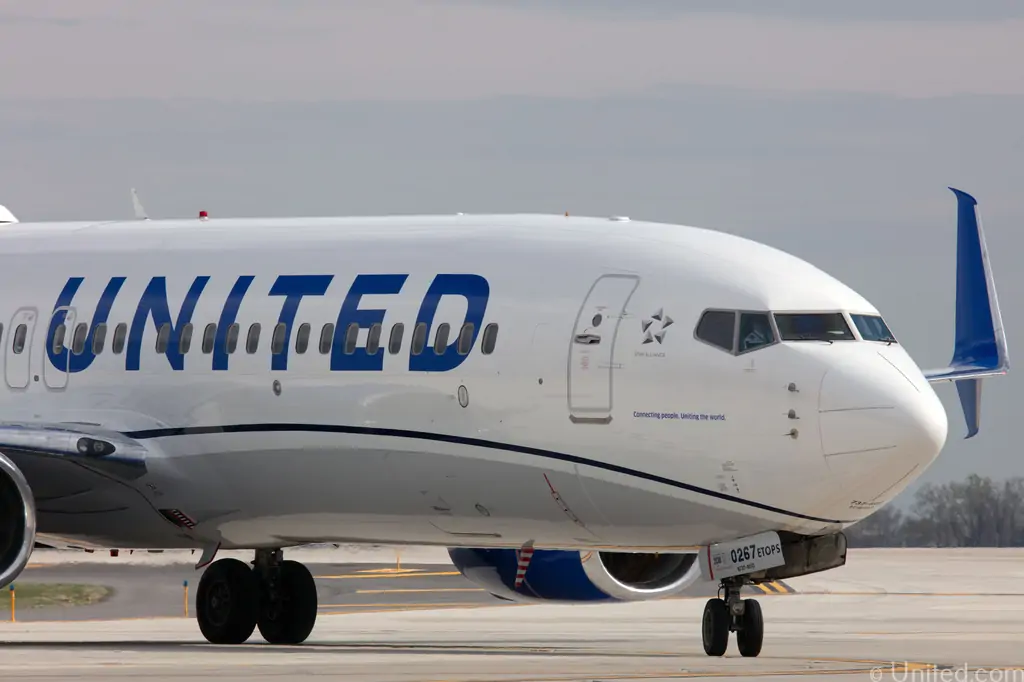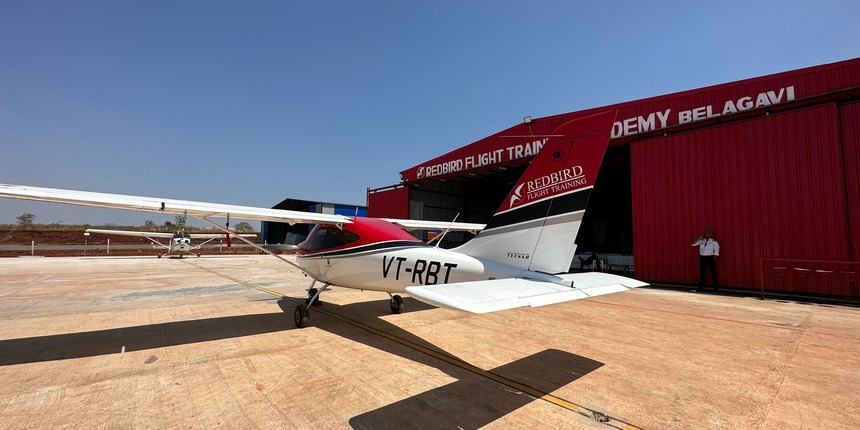United Airlines is navigating a pivotal moment in its growth strategy as it grapples with the implications of the Boeing 737 MAX 10's uncertain future. Chief Financial Officer Mike Leskinen's recent remarks shed light on the airline's shift towards relying more on Boeing 737 MAX 9 and Airbus A321 aircraft. This move comes in response to concerns raised by a recent mid-air emergency involving an Alaska Airlines 737 MAX 9, casting doubts over the certification timeline for the MAX 10 variant. Amidst these developments, United Airlines faces the challenge of maintaining its ambitious growth targets outlined in its "United Next" plan.
Uncertainty Surrounding Boeing 737 MAX 10
The mid-air emergency incident involving an Alaska Airlines 737 MAX 9 has prompted fresh uncertainties regarding the certification and delivery timeline of the Boeing 737 MAX 10. United Airlines, which had placed a substantial order for 277 MAX 10 jets with options for an additional 200, now faces uncertainty about the feasibility of incorporating these aircraft into its fleet. Despite not canceling the order outright, United has removed the MAX 10 from its internal plans, raising questions about its ability to achieve its ambitious growth targets.
Shift in Strategy Towards Boeing 737 MAX 9 and Airbus A321
Chief Financial Officer Mike Leskinen outlined United Airlines' revised strategy, emphasizing a greater reliance on Boeing 737 MAX 9 and Airbus A321 aircraft to pursue its growth plans. Leskinen acknowledged that without the MAX 10, United would not be able to expand its capacity as rapidly as envisioned under the "United Next" plan. The airline is now evaluating the mix of MAX 9 and A321 aircraft, with pricing considerations playing a significant role in the decision-making process.
Exploring Alternatives with Airbus
In light of the uncertainty surrounding the MAX 10, United Airlines has approached rival Airbus to explore the possibility of acquiring additional A321neo jets as potential alternatives to its MAX 10 order. This strategic move underscores United's proactive approach to mitigating risks associated with potential delays or uncertainties in Boeing's delivery schedule. By diversifying its fleet with Airbus aircraft, United aims to maintain flexibility and resilience in its operations.
Disappointment with Boeing
Leskinen expressed United Airlines' deep disappointment with Boeing due to ongoing aircraft delivery delays. The airline has been impacted by delays in receiving MAX aircraft, affecting its ability to execute its growth plans effectively. In response to these challenges, United is considering options to incorporate additional Airbus aircraft into its predominantly Boeing fleet. This strategic maneuver aims to address short-term capacity constraints while extending the lifespan of existing aircraft slated for retirement.
Conclusion
United Airlines finds itself at a crossroads as it navigates the uncertainties surrounding the Boeing 737 MAX 10 and adjusts its growth strategy accordingly. With a focus on leveraging Boeing 737 MAX 9 and Airbus A321 aircraft, the airline aims to maintain momentum towards achieving its growth targets outlined in the "United Next" plan. As it grapples with delivery delays and uncertainty, United Airlines remains committed to adapting its fleet strategy to ensure resilience and flexibility in the ever-evolving aviation landscape.
Read next
Will Cebu Pacific's Aircraft Decision Shape the Future of Southeast Asian Aviation?
Abhishek Nayar
22 Feb 2024

In a pivotal moment for the Southeast Asian aviation industry, Cebu Pacific, one of the region's leading budget airlines, is poised to make a consequential decision regarding its fleet expansion. With the choice between Airbus and Boeing narrowbody aircraft models, Cebu Pacific's selection could not only redefine its own trajectory but also send ripples throughout the competitive landscape of commercial aviation in the region.
The Decision Dilemma: Airbus vs. Boeing
Cebu Pacific CEO Michael Szucs has revealed that the airline will determine whether to opt for a combination of Airbus A320neo and A321neo models or Boeing's 737 MAX 8-200 and 737 MAX 10. This decision is not merely about acquiring new aircraft; it's a strategic move that involves considering factors such as operational efficiency, passenger capacity, and runway adaptability.
Market Dynamics and Implications
The choice between Airbus and Boeing carries significant implications for both manufacturers. For Boeing, still grappling with the aftermath of past crises, securing Cebu Pacific's order would signal a crucial vote of confidence. Conversely, Airbus aims to maintain its dominance in the narrowbody segment, leveraging its existing relationship with the airline, which currently operates an all-Airbus fleet.
Navigating Safety Concerns and Market Confidence
Boeing faces the challenge of regaining trust following recent incidents involving the 737 MAX series. Szucs's assurance regarding Boeing's communication and problem-solving efforts underscores the importance of addressing safety concerns to secure Cebu Pacific's trust. The airline's decision will reflect not only its confidence in Boeing's ability to resolve issues but also its commitment to passenger safety.
Fleet Expansion Amidst Industry Challenges
Cebu Pacific's ambitious plans to more than double its fleet by 2035 align with projections of a long-term travel boom in Southeast Asia. However, challenges such as engine inspections and temporary groundings highlight the complexities of fleet management amidst evolving regulatory requirements and technological advancements.
Engine Selection: Pratt & Whitney vs. CFM International
The choice of engines further complicates Cebu Pacific's decision-making process. While Pratt & Whitney engines have been selected for some A320neo family aircraft, concerns over potential flaws and inspection drives raise operational uncertainties. CFM International, as the sole provider for the 737 MAX, presents a viable alternative, adding another layer of consideration for the airline.
Conclusion
As Cebu Pacific evaluates its options and prepares to announce its decision in May or June, the aviation industry watches with keen interest. Beyond the immediate implications for Airbus and Boeing, this decision holds the potential to shape the future of Southeast Asian aviation, influencing fleet compositions, market dynamics, and safety standards for years to come.
With Inputs from Reuters
Read next
The ECIP agreement, coupled with the Pool Program that Scoot has earlier signed for, will provide comprehensive support for Scoot’s incoming fleet of nine E190-E2 jets. The airline will be the first ECIP customer in the Asia-Pacific region.
Ng Chee Keong, Chief Operating Officer, Scoot, said, “Our continued partnership with Embraer is testament of our commitment to deliver optimal performance with the new E190-E2 fleet. As we anticipate the arrival of our first Embraer jet in the near future, this strategic arrangement will help ensure operational efficiency.”
“Embraer’s wide suite of services is built on understanding and anticipating the needs of our airline customers in a very dynamic environment,” said Carlos Naufel, President and CEO, Embraer Services & Support. “We thank Scoot for their trust in us as we work towards the operations of their fleet of E190-E2.”
Singapore is the center for Embraer’s services and support Asia Pacific operations. In addition to personnel based in Singapore, the Company has a Regional Distribution Centre within Changi Airport’s free trade zone. The Regional Distribution Centre provides round-the-clock spare-parts provision and support for Embraer’s customers from a centralized location within the region.
ECIP offers multiple advantages to customers. It includes the minimization of customer disbursement as most of the inventory investment is done by Embraer, reducing substantially the investment usually carried out by airlines. Also, it covers fixed yearly pricing for the items covered on the ECIP scope, allowing customers to have cashflow predictability under agreed levels of service.
Read next
Embraer and CAE have inaugurated the Asia Pacific (APAC) region's first E-Jets E2 full flight simulator (FFS) in Singapore.
The FFS is located at the Singapore-CAE Flight Training Centre near Changi Airport and will support E2 operators in the region.
The E2 training program will feature CAE’s competency-based training assessment (CBTA) courseware, interactive classroom instruction with the CAE Simfinity virtual simulator (VSIM), and immersive practical training in a CAE 7000XR Series FFS.
Pilots from Singapore Airlines’ subsidiary, Scoot, have already begun their training in preparation of the Embraer E190-E2 aircraft’s entry into service with the airline later this year.
"We celebrate the successful operations of the E2 simulator and comprehensive pilot training program and thank all our partners and employees who have been involved in this process,” says Carlos Naufel, President & CEO of Embraer Services & Support. “This is part of Embraer’s commitment to grow our infrastructure in Asia Pacific and to contribute to the region’s aviation growth story. Along with CAE, we remain committed to providing high-quality training to our customers and their pilots.”
“The start of training and the official inauguration of the first state-of-the-art E2 full flight simulator in the Asia Pacific region is a significant milestone in the growth and success of Embraer-CAE Flight Training,” said Michel Azar-Hmouda, CAE’s Division President, Civil Aviation Training. “Technology is at the core of the new E2 program, with CAE’s VSIM, CBTA courseware and latest-generation FFS preparing pilots for the entry-into-service and safe operation of the E2 in the APAC Region.”
“Embraer and CAE’s launch of the E-Jets E2 full-flight simulator in Singapore is the first of its kind in Asia Pacific. Not only does it add to the suite of aftermarket services in Singapore, it is a valuable addition to the region’s aerospace and aviation ecosystem. We look forward to collaborating with industry partners to build capabilities that fuel the growth in APAC and enhance the skills of aerospace and aviation talent in the region, from Singapore,” said Ms Elaine Teo, Senior Vice President, Global Enterprises Division, Singapore Economic Development Board.
The simulator was certified by the Civil Aviation Authority of Singapore in December 2023.
Read next
Satair, an Airbus Services company, and Telair, the supplier of aerospace cargo loading solutions have signed a multi-year agreement, extending their global exclusive distribution rights for commercial wide- and narrow-body aircraft and military applications.
Under the new agreement, Satair continues to distribute Telair’s full portfolio of products with applications on a variety of aircraft platforms, including the Airbus A350, A330, A320/321 Family, A330MRTT, A321PCF and Boeing B747-400F/-8F Main Deck Freighters as well as B777 CRAF, with even more to come.
Thomas Lagaillarde, Head of Product Management, Satair, remarked: “We are pleased to continue our partnership and strengthen the longstanding relationship between Satair and Telair, ensuring that our product portfolio continues to grow. With this distribution offering, and through our close collaboration with Telair, we are committed to ensuring smooth operations for our customers.”
Ralf Schoenzler, Telair President, commented: “As we renew our collaboration between Telair and Satair, we underscore our flexibility and growth. This extended distribution agreement underlines our mutual drive to evolve with market demands, ensuring seamless cargo transportation solutions backed by Telair's unwavering support and expertise.”
Read next
The Directorate General of Civil Aviation (DGCA) has cleared Red Bird Flight Training Academy to resume operations.
The operations have only been allowed at its Baramati base and using only five Cessna planes.
"They have cleared the DGCA recertification process CAR 145 maintenance at Baramati," a source said.
The operations of the institute were suspended late last year after multiple incidents.
The first incident took place on 19 October and involved a Tecnam P2008JC single-engine aircraft VT-RBC. The aircraft sustained substantial damage in the crash-landing while the pilot suffered minor injuries.
The second incident took place on 22 October and involved a Tecnam P2008JC single-engine aircraft VT-RBT. The landing gear, propeller, wings, and fuselage were damaged.
“These occurrences indicate a gap in maintenance and operational elements. DGCA has accordingly suspended the operations of Redbird Flight Training Academy at all their bases in the country," the regulator had said then.







Comment